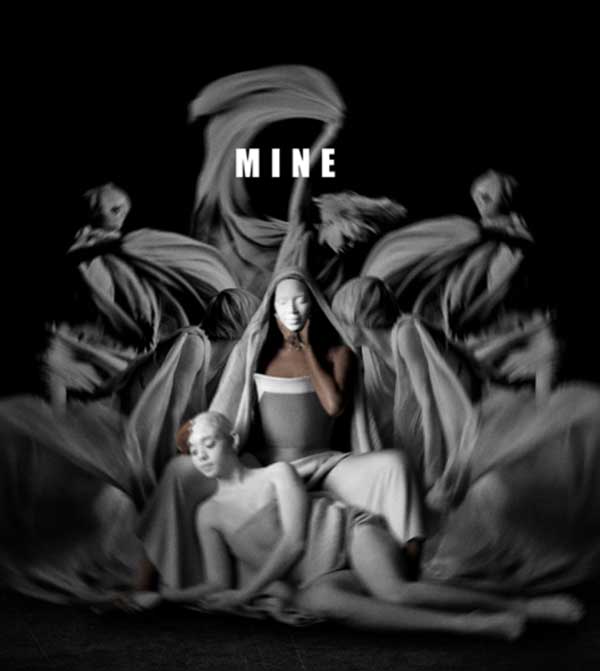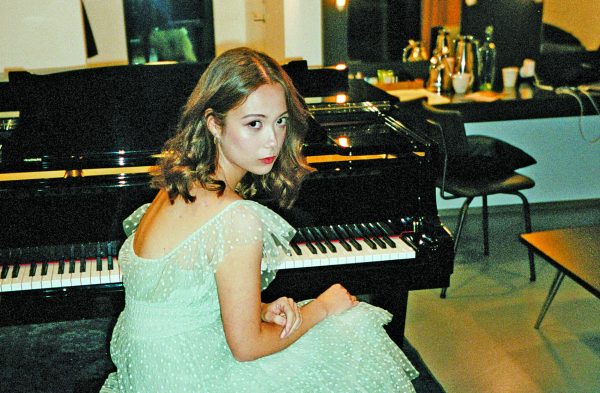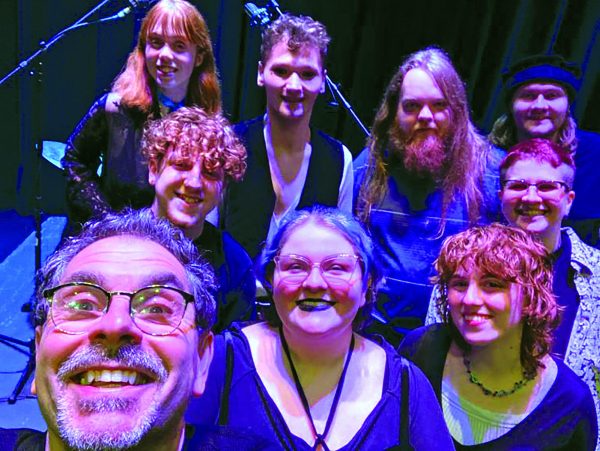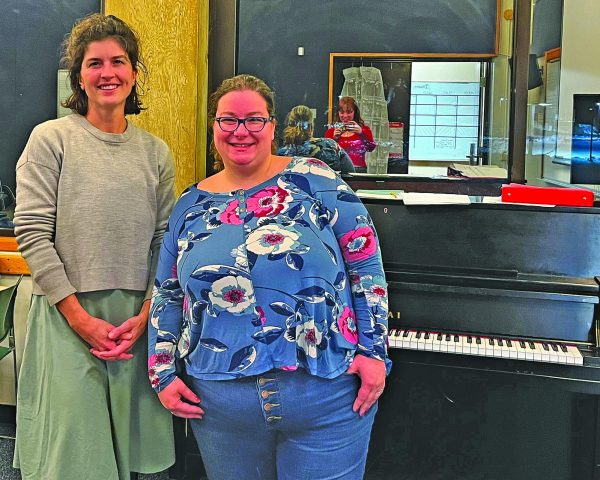Beyonce’s Declaration of Independence
The cover of Beyonce’s “Mine” single
Many celebrated as Beyoncé Knowles became Beyoncé Knowles-Carter, and I, like many others, rejoiced when the two superstars had a child together. They deserve a break, they are busy with baby Blue. No one expects a new wife and mother to create the best work of her career.
Beyoncé fans were promised some sort of music release in 2013-14, but no one could have anticipated the beautiful collection that came with “Beyoncé,” the artist’s fifth solo studio album. The self-titled project offers 14 audio tracks and 17 music videos, all painting a story of a woman fused with independence, sexuality, family love, and damn good dance moves.
The album offers some fun-sexy songs with fast pop beats, like her song “Blow.” Other songs travel from sexy to seductive, like “Rocket,” and “Partition,” where she commands, “Driver, roll up the partition please.” The music video to “Partition” makes it clear as to why she needs her privacy. In the back of the limo is a darkly dressed, and shadow-covered Jay-Z, who is soon involved in some heavy petting with Beyoncé, who sports dark lace and gold jewels. “Partition” is an up-tempo track that begins with a throbbing bass tone that is constant throughout. The beat becomes very layered. The drums become infused with snaps and claps that are so often the cause for pop/hip-hop lovers to hit the dance floor. Electronic piston sounds also make a quick appearance in “Partition.”
“Beyoncé” is as an example of what masterfully produced hip-hop/R&B can sound like. Every song uses the genre’s electronic weapons with accuracy, perfection, and variety. Beyoncé’s voice offers variety as well; at times the singer is soulful and romantic sounding other times she hollers her high notes or delivers deep diaphragm low notes, and at times she decides to rap. She is flawless throughout.
The album takes audiences to brightly lit carnivals, exotic beaches, big city streets, cool white deserts, roller skate arenas, competitive beauty pageant dress rooms, and, more than once, the singer’s bedroom.
The portrait the music videos create is nothing less than an impressive piece of art. The album bursts through the roof that is hip-hop/R&B culture and attempts to settle somewhere in a community shared by artists who deliver masterpieces to the public.
In addition to her husband being featured on the album, Beyoncé recruited Frank Ocean, Drake, and her daughter Blue Ivy to offer lyrics. Beyoncé is the executive producer of her new album, and, with some help from co-writers, she penned the lyrics in all of the tracks.
Beyoncé worked with 10 directors to make her visual album a success, including 43-year-old Hype Williams, Jonas Akerlund, who is responsible for Madonna’s Grammy Award winning video “Ray of Light,” and Grammy winner Melina Matsoukas.
In her song “Flawless,” Beyoncé gives voice to Nigerian author Chimamanda Ngozi Adichie. The sample is from a well-spoken lecture on feminism by Adichie. The track begins with Beyoncé speaking on the issue in her own, more abrasive way: “I know when you were little girls/You dreamt of being in my world/Don’t forget it, don’t forget it/Respect that, bow down bitches- Crown!”
“Flawless” is one of the more hip-hoppy tracks on the album. While wearing short tattered denim shorts and a flannel-collar shirt, Beyoncé moves with authority to a beat that transforms listeners into bobble-heads. The instruments are very sharp and crisp. Bass-driven drums occasionally complement the high tones that dominate the track. She dances and speaks in a black and grey underground venue that is decorated with graffiti and trash can fires, where the extras (all of whom are extremely good looking hipster people) dance and mosh in slow motion. She goes on to sing, “I took some time to live my life/But don’t think I’m just his little wife/Don’t get it twisted, get it twisted/This my shit, bow down bitches.”
Viewers of the visual album get to see Beyoncé in many stages of life, from toddler to young teenager. Audiences watch the youngBeyoncé practicing dance moves with friends, and witness various 80’s and 90’s versions of Destiny’s Child, the female R&B group that made Beyoncé famous. Former Child Kelly Rowland appears in a few of the videos. It is hard not to crack a smile at the sense of friendship and fun the two young women are having while in wearing denim overalls and 90’s neon.
Beyoncé gets her viewers to feel sexy, and to laugh, and at times cry as well. Her song “Heaven” is set to a slow piano piece. Her voice often moans and echoes behind the slow piano progression. In the song, she sings over and over “Heaven couldn’t wait for you, no, heaven couldn’t wait for you. So go home, go home.” A power that can only be described as spiritual and angelic is admitted each time Beyoncé sings these lines, each repetition growing with volume and heartache. “Heaven” is bound to administer some cold chills.
The most impressive video set is for the song “Haunted.” Viewers find Beyoncé dressed in heels and a form fitting suit, clacking through a haunted mansion that echoes with each step. Her hair is blonde and slicked back in a style reminiscent of Madonna. Beyoncé’s lips are blood-red. The many rooms are home to static televisions and ghostly, destitute rooms covered in unnaturally shiny white sheets.
An eerie piano riff kicks off “Haunted.” Part of the song incorporates a jungle beat while other parts of the song offers industrial and distorted sounds that remind listeners o grinding machines. “Haunted” is a perfect example of how alive each song on the album feels. The entire album moves and evolves, never allowing the ears to feel stagnant.
Other entities join Beyoncé in the mansion: thugs with painted faces, humans dressed like hawks, wielding axes, and others that don gas masks while rubbing against each other. All of the characters in the video are dressed glamorously; red nails and red lipstick break the battle between black and white costumes. Grim Reapers and Death Angels make an eerie appearance in the video as Beyoncé sings the haunted love/lust song.
The album ends with “Blue,” a music video that shows Beyoncé holding her daughter, singing “Make it last forever/ Come on baby won’t you hold on to me, hold on to me /You and I together /Come on baby won’t you hold on to me.” This song is another that relies on piano quite a bit, but with a tempo much faster than “Heaven.” The song has light feeling, the lyrics being sung over some tambourine and quick snare beats. The song fades with Beyoncé’s daughter laughing and saying, “Hold on to me. Mommy, Mommy, Mommy! Miss you Daddy, miss you Daddy.”
Beyoncé gives additional insight into the album and her journey as an artist, mother, and wife in a four-part video series that she released shortly after the album came out. The videos can be found on her website and youtube.
Travis LeClair joined the Basement Medicine staff in Spring 2014, assuming the position of staff reporter.











